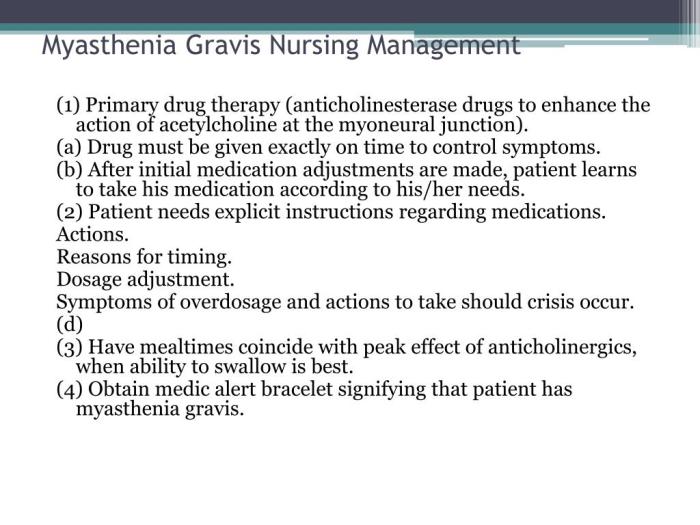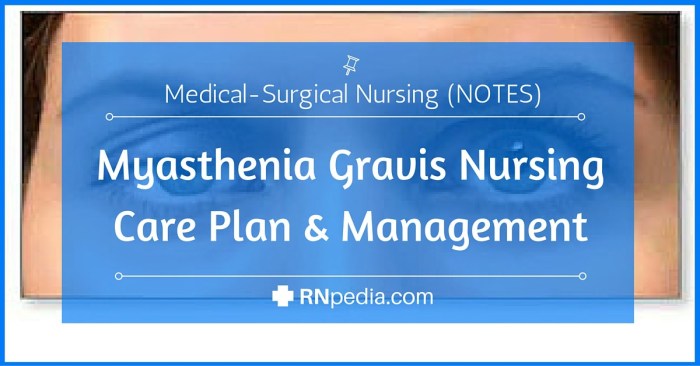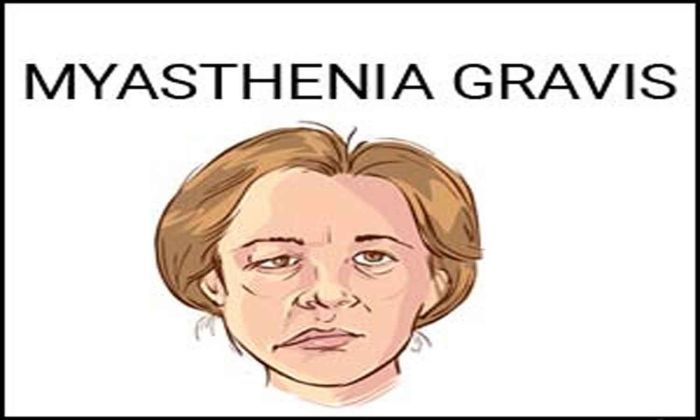Nursing management of myasthenia gravis plays a pivotal role in the comprehensive care of patients affected by this neuromuscular disorder. Understanding the pathophysiology, clinical manifestations, and diagnostic evaluation of myasthenia gravis is essential for nurses to provide informed and effective care.
This article delves into the intricacies of nursing management, exploring pharmacological and non-pharmacological interventions, patient education, and support strategies.
Nurses serve as patient advocates, collaborating with healthcare teams to develop individualized care plans that address the unique needs of each patient. By understanding the complexities of myasthenia gravis and its management, nurses can empower patients to manage their symptoms, improve their quality of life, and achieve optimal outcomes.
1. Definition of Myasthenia Gravis

Myasthenia gravis is an autoimmune neuromuscular disorder characterized by fluctuating muscle weakness and fatigability.
Pathophysiology: Myasthenia gravis occurs due to a disruption in the transmission of nerve impulses to muscles. Normally, nerve impulses are transmitted to muscles through a chemical messenger called acetylcholine, which binds to receptors on the muscle surface. In myasthenia gravis, the immune system produces antibodies that block or destroy these acetylcholine receptors, impairing nerve-muscle communication and leading to muscle weakness.
2. Clinical Manifestations of Myasthenia Gravis: Nursing Management Of Myasthenia Gravis

- Ocular symptoms: Ptosis (drooping eyelids), diplopia (double vision), and blurred vision
- Bulbar symptoms: Dysphagia (difficulty swallowing), dysarthria (difficulty speaking), and nasal speech
- Proximal limb weakness: Weakness in the arms, legs, shoulders, and hips
- Respiratory muscle weakness: Shortness of breath, dyspnea, and respiratory failure in severe cases
3. Diagnostic Evaluation of Myasthenia Gravis
| Test | Procedure | Interpretation |
|---|---|---|
| Tensilon test | Injection of the cholinesterase inhibitor edrophonium | Temporary improvement in muscle strength indicates a positive result |
| Repetitive nerve stimulation test | Repeated electrical stimulation of a nerve | Decrement in muscle response amplitude suggests myasthenia gravis |
| Serum antibody testing | Detection of anti-acetylcholine receptor antibodies (AChR Abs) | Elevated AChR Abs levels support the diagnosis |
| Single-fiber electromyography | Evaluation of the electrical activity of individual muscle fibers | Abnormal jitter and blocking suggest myasthenia gravis |
4. Nursing Management of Myasthenia Gravis

Assessment:* Monitor muscle strength and fatigability
- Assess respiratory function and swallow function
- Evaluate for myasthenic crisis risk factors
Interventions:* Administer medications as prescribed (cholinesterase inhibitors, immunosuppressants)
- Provide respiratory support as needed (oxygen, mechanical ventilation)
- Assist with activities of daily living (bathing, eating, dressing)
- Educate patients about disease management and coping mechanisms
Evaluation:* Improved muscle strength and function
- Reduced myasthenic crisis risk
- Enhanced quality of life
Essential Questionnaire
What are the common clinical manifestations of myasthenia gravis?
Weakness of facial muscles, drooping eyelids, difficulty swallowing, slurred speech, and respiratory distress are common clinical manifestations.
What is the gold standard test for diagnosing myasthenia gravis?
The Tensilon test is considered the gold standard test for diagnosing myasthenia gravis.
What is the primary pharmacological treatment for myasthenia gravis?
Acetylcholinesterase inhibitors, such as pyridostigmine, are the primary pharmacological treatment for myasthenia gravis.
What is the role of nurses in managing myasthenic crisis?
Nurses play a critical role in recognizing and managing myasthenic crisis, which requires immediate medical attention and supportive care.